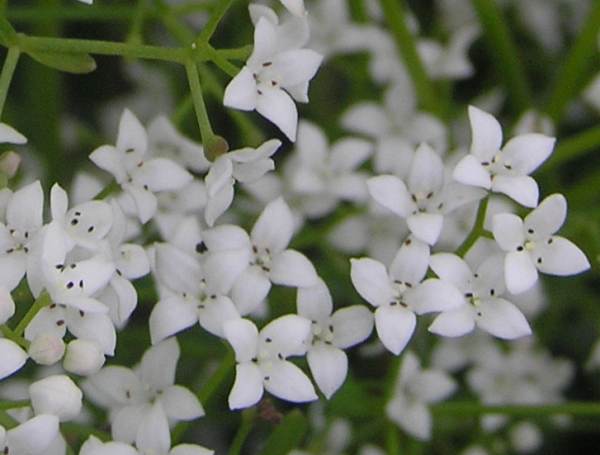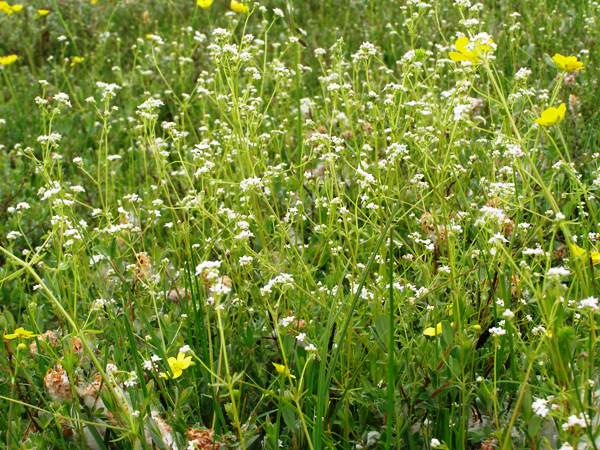Trees Birds Mammals Fish Amphibians Reptiles
Wild Algarve
Bookshop
Galium palustre - Marsh Bedstraw
Phylum: Anthophyta - Class: Equisetopsida - Order: Gentianales - Family: Rubiaceae

This abundant member of the bedstraw family is a straggly, branching perennial (sometimes annual) that leans for support against other more robust herbs.
Description
Marsh Bedstraw can reach a height of half a metre or so. The stems are usually four sided (squarish) and the narrow leaves, in whorls of usually four (but occasionally up to six), have rounded tips and their margins bear small, backward-facing bristles. From pinkish round buds, four-petalled flowers 3 to 4mm in diameter open to reveal four stamens. The fruits are round and smooth, unlike to hairy-sticky fruits of Galium aparine, Cleavers. Marsh Bedstraw is quite a variable plant, particularly in its leaf form, and several subspecies have been described.
Habitat
You will find Marsh Bedstraw in ditches, on lake shores and in marshy meadows. This is a plant that quickly colonises the margins of newly-created garden ponds.
Distribution
Found throughout Britain and Ireland, Galium palustre occurs also throughout Europe, North Africa and western Asia. In some parts of the USA it is considered a (native) noxious weed, while in New Zealand it is thought to be a naturalised introduction.

Blooming times
In late spring and early summer the tiny white flowers appear is large numbers, often dominating wet meadows despite the presence of many other wildflowers species.

Similar species
There are several other kinds of bedstraw in Britain, including Heath Bedstraw, Lady's Bedstraw, Common Bedstraw (also known as Cleavers) and Hedge Bedstraw.
Etymology
The genus name Galium comes from the Greek word for milk, and it referes to the fact that flowers of Galium verum (Lady's Bedstraw) were used to curdle milk when making cheese. From the common name of plants in this genus you are right to infer that at one time these plants were dried and used for making bedding. The specific epithet palustre comes from Latin and means 'marshy'.
The plants shown on this page as photographed in West Wales during July.
Sue Parker's latest ebook is a revised and enlarged edition of Wild Orchids in The Burren. Full details here...
Buy it for just £5.95 on Amazon...
Sue Parker's new ebook is a comprehensive and fully revised edition of her acclaimed field guide to the Wild Orchids of Wales. Full details here...
Buy it for just £5.95 on Amazon...
Please Help Us: If you have found this information interesting and useful, please consider helping to keep First Nature online by making a small donation towards the web hosting and internet costs.
Any donations over and above the essential running costs will help support the conservation work of Plantlife, the Rivers Trust and charitable botanic gardens - as do author royalties and publisher proceeds from books by Pat and Sue.